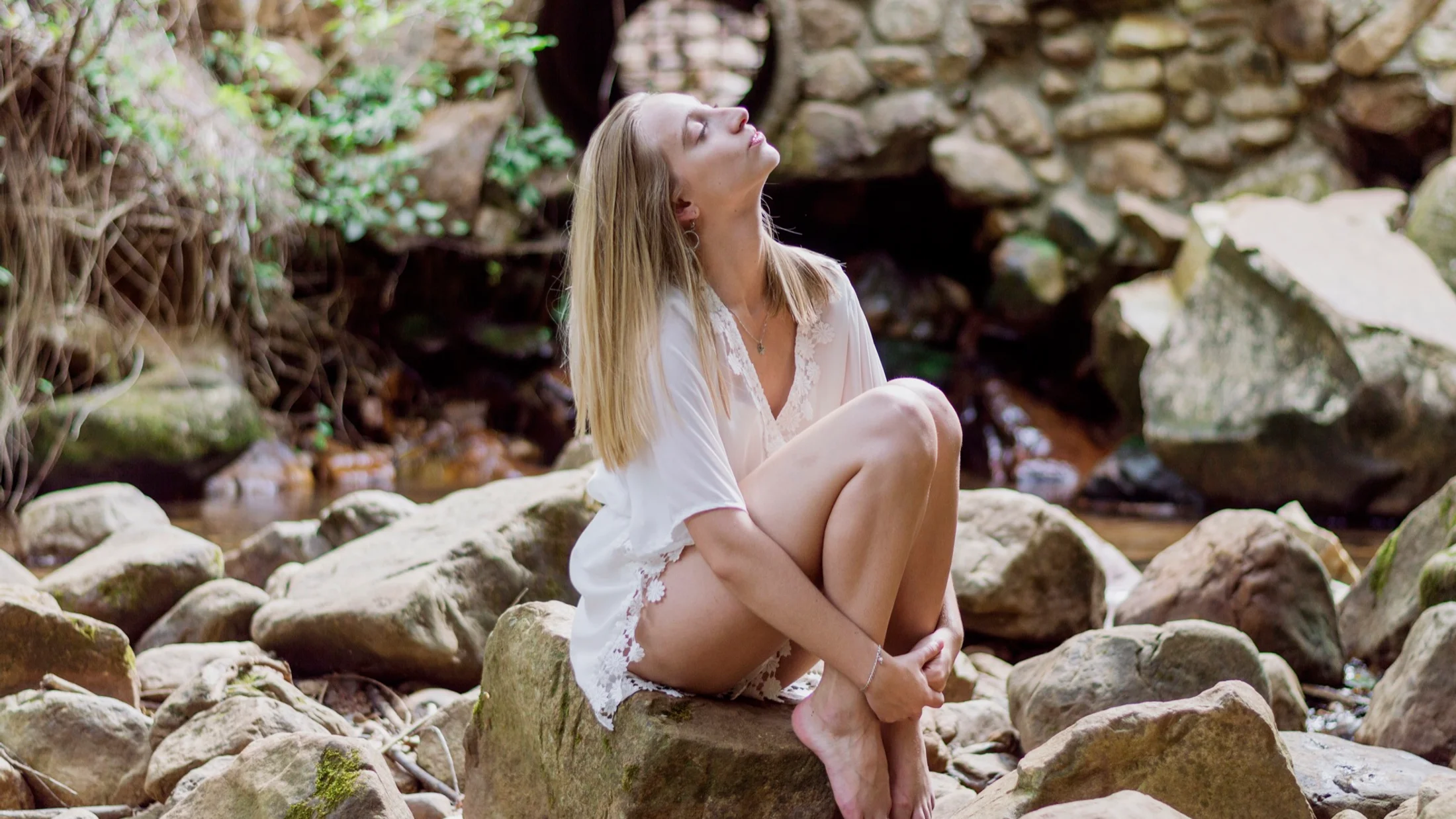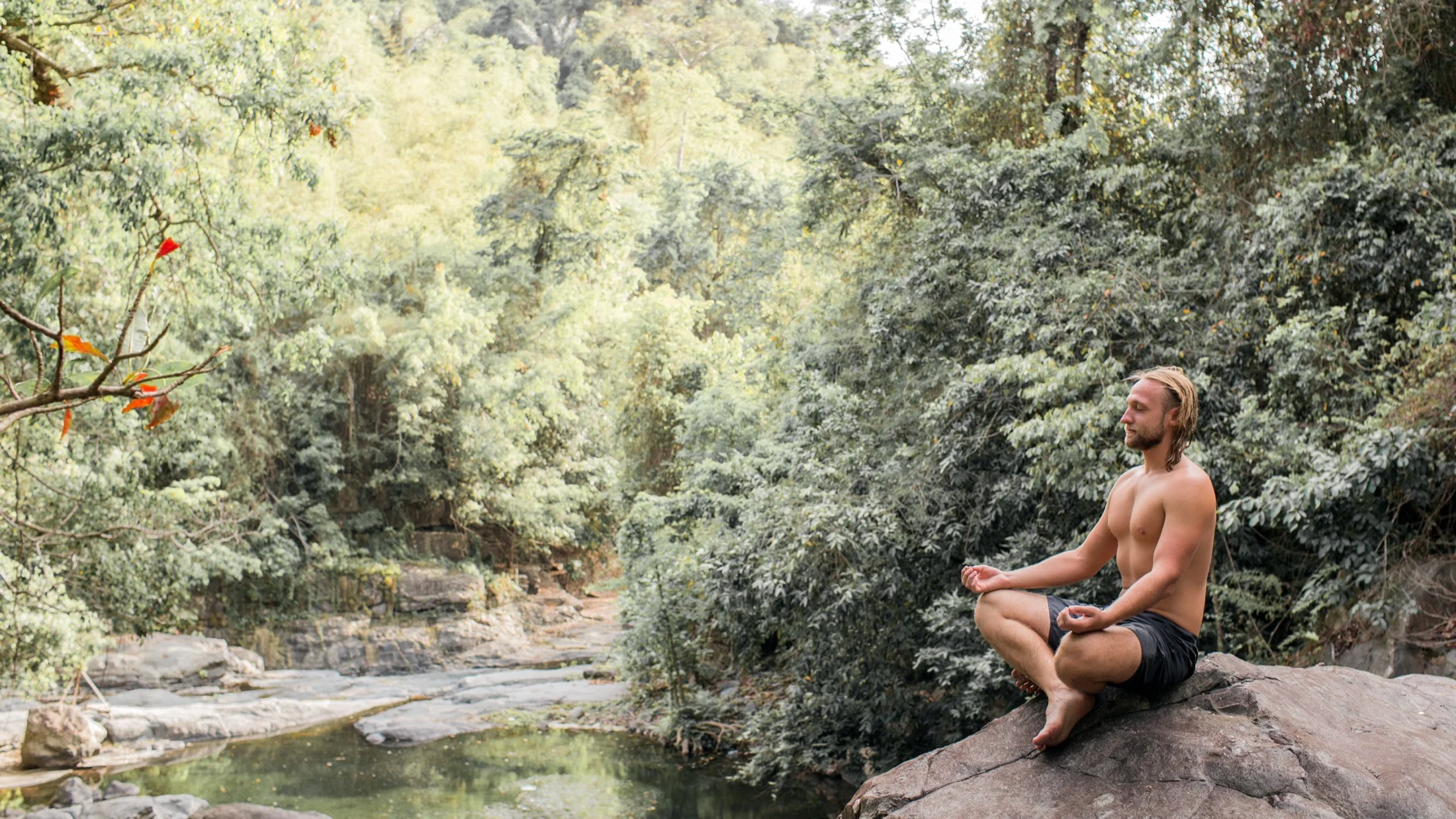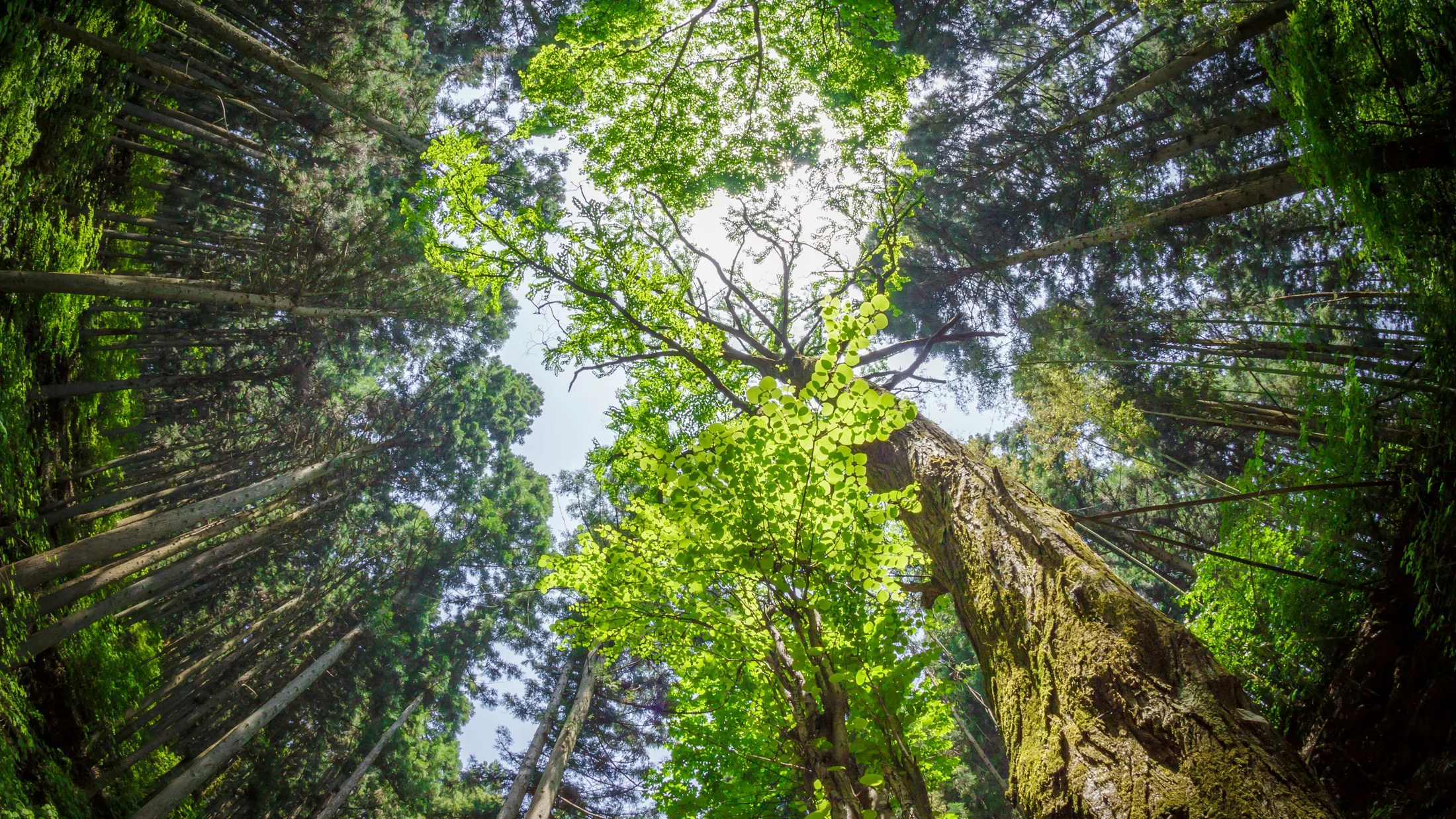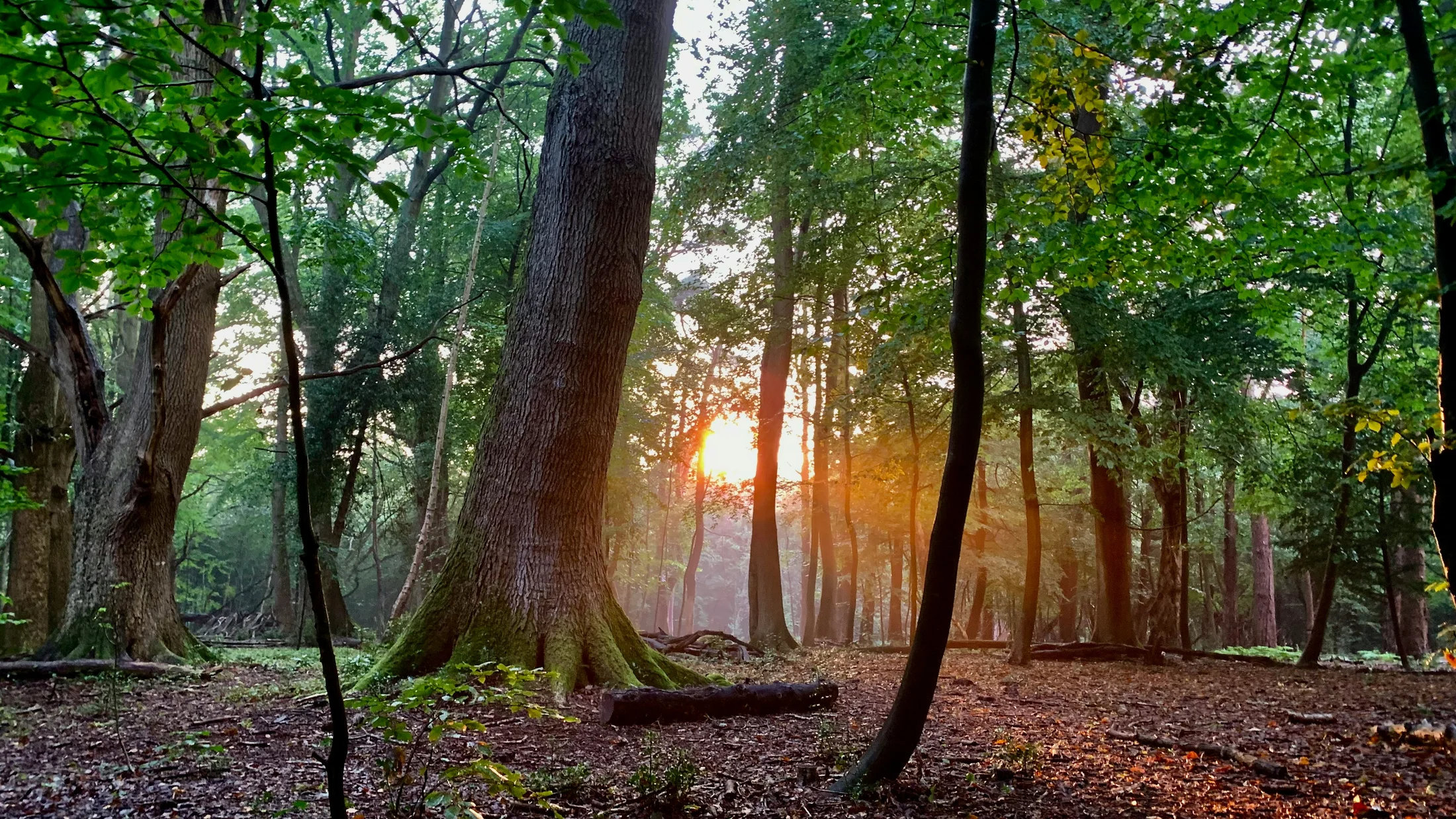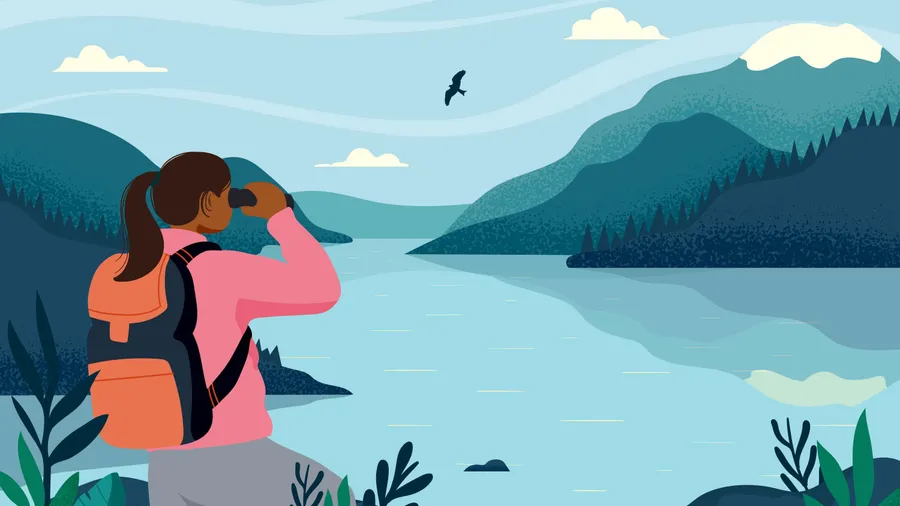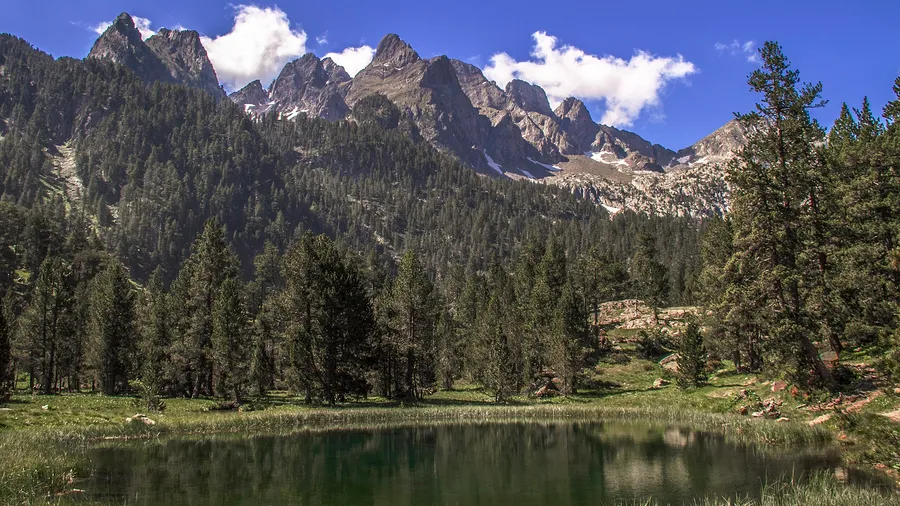Forest Bathing in Spain: What It Is and Where to Try It (2026 Guide)
What Is Forest Bathing (Shinrin-Yoku)
You walk slowly among centuries-old beech trees, unhurried, with no destination. Forest bathing is much more than a stroll: it's a therapeutic practice born in Japan that invites you to connect with nature consciously.
Origins in Japan
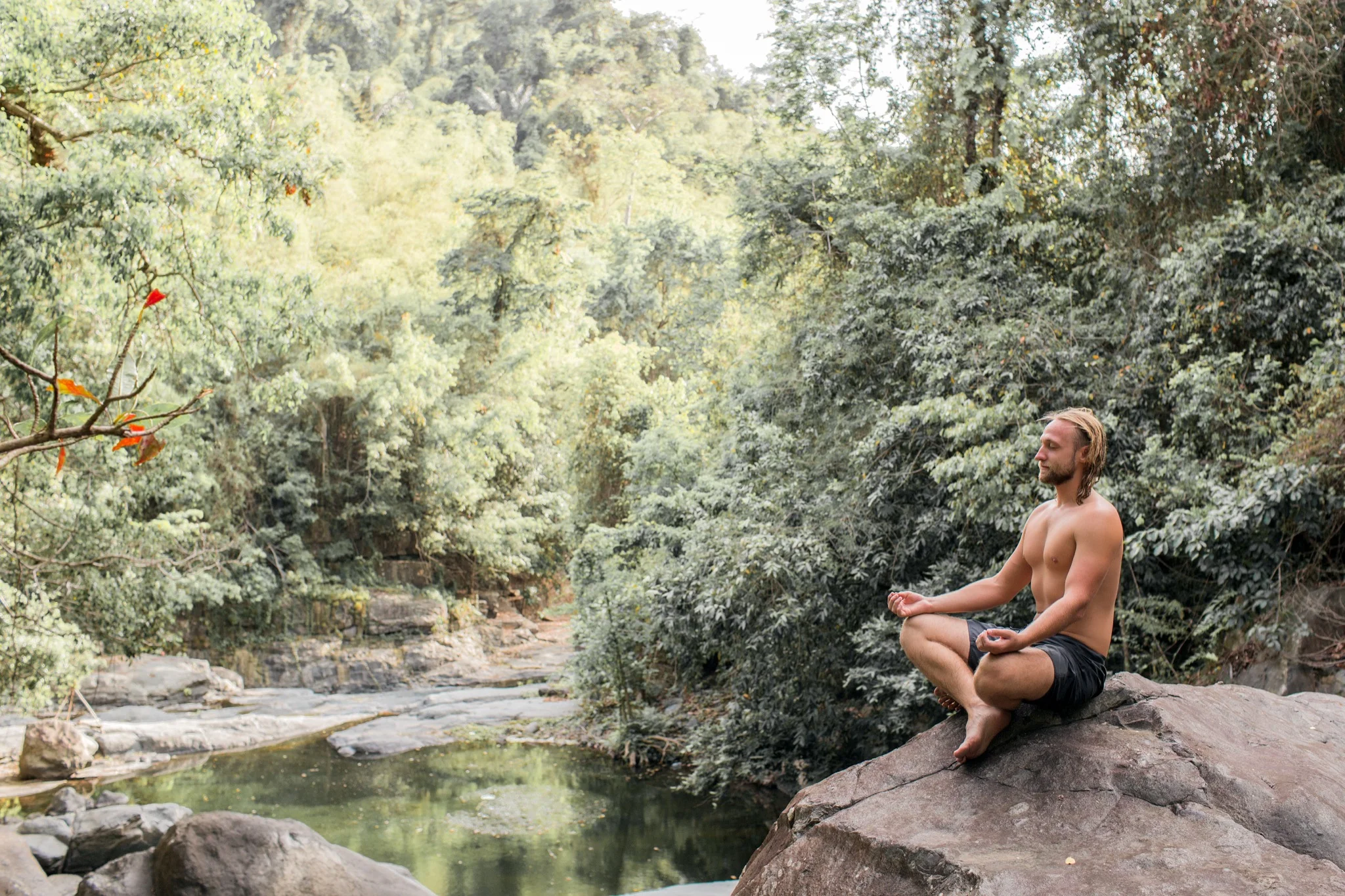
Shinrin-yoku emerged in Japan in the 1980s as a response to urban stress and digital disconnection. The term literally means "absorbing the forest atmosphere" and was coined by Japan's Ministry of Agriculture in 1982. Today it's part of preventive medicine in Japan, with certified therapeutic forests where scientific studies examine its health effects.
Unlike traditional hiking, where you aim to reach a specific point, in forest bathing the goal is to be present. You don't count kilometers or elevation gain: you count sensations.
What Forest Bathing Involves
A typical forest bath lasts 2-3 hours, during which you cover barely 1-2 miles. You walk very slowly, stop frequently, and consciously activate your five senses: you observe the light filtering through leaves, listen to birdsong, touch tree bark, smell damp earth.
The practice includes breathing exercises, gentle meditation, and moments of silence. It's not about intense physical exercise, but about being present in the forest with all your senses awake. The pace is so slow that you can practice it at any age and fitness level.
Proven Scientific Benefits
Forest bathing isn't just a wellness trend: there's solid scientific evidence behind it. According to studies from Chiba University and Dr. Qing Li, a medical researcher specializing in forest medicine, spending time in the forest consciously reduces cortisol levels (the stress hormone) by up to 12.4% after just 15 minutes.
It also increases NK cell (natural killer) activity, part of the immune system that protects us from infections and tumors. Other proven benefits include reduced blood pressure, improved mood, decreased anxiety, and increased creativity. All this without medication: you just need a forest and time.
The Best Places for Forest Bathing in Spain
Spain has forests of enormous diversity that invite the practice of shinrin-yoku. From Atlantic beech forests to Mediterranean cork oak groves, these are the seven most recommended places for your first forest bath.
1. Hayedo de Montejo (Madrid)
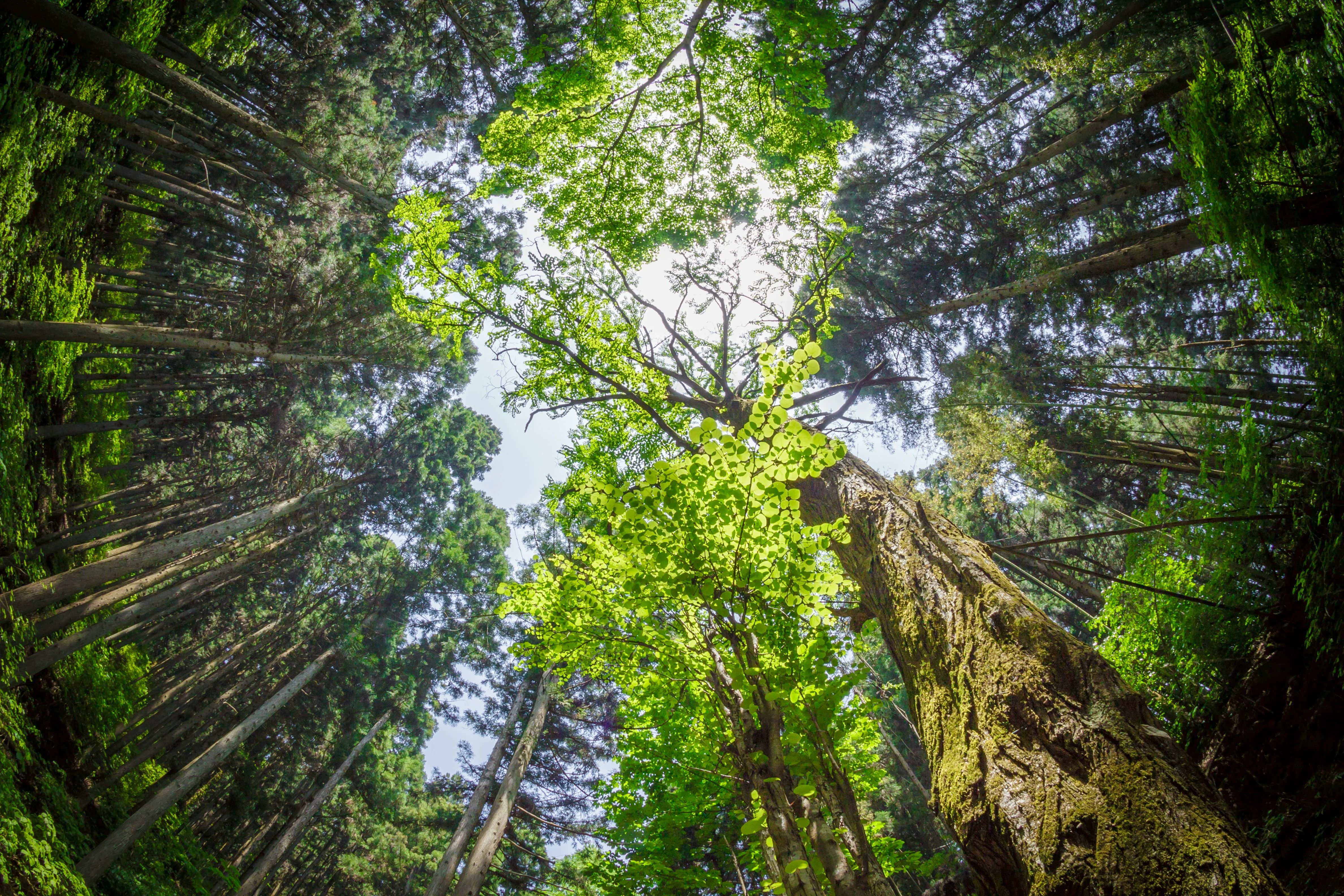
Hayedo de Montejo is a botanical treasure: a beech forest in the heart of Mediterranean climate, something exceptional on the Iberian Peninsula. Declared a UNESCO World Heritage Site, this beech forest offers a unique atmosphere where light filters through leaves that change from deep green to golden tones with the seasons.
Why it's ideal for forest bathing: Its restricted access guarantees tranquility (only 500 visitors per day) and the routes are short and easy, perfect for walking slowly. The sound of the Jarama River accompanies the entire journey.
Best season: Autumn, when the beeches turn ochre and orange. Spring is also excellent, with the tender green of new leaves.
Access: Prior reservation required on the Madrid Regional Government website. Spots fill up fast, especially in October and November.
Guided experiences: Several certified guides offer 3-hour guided forest baths, including meditation practices and flora recognition.
👉 Explore forest bathing experiences in Madrid on Picuco
2. Irati Forest (Navarre)
With over 42,000 acres, Irati Forest is the second-largest and best-preserved beech-fir forest in Europe. Here the silence is almost absolute: you only hear the wind through the beeches and birdsong.
The aroma of moss and wet wood envelops you from the first step. This is a forest where getting lost (map in hand) becomes a meditative experience.
Why it's ideal for forest bathing: The forest's immensity allows you to find solitary corners even during high season. The trails are well-marked but long enough to take your time.
Best season: Spring (May-June) for brilliant green and birdsong. Autumn (October) for reddish and golden colors.
Recommended routes: The Waterfall Trail combines forest with water, a key element in shinrin-yoku practice.
Retreats: Several nearby rural houses offer 2-3 day retreats combining forest bathing, yoga, and mindful eating.
👉 Find nature retreats in Navarre on Picuco
3. Fragas do Eume (Galicia)
Fragas do Eume is a fairytale Atlantic forest: centuries-old oak trees, giant ferns, moss covering every stone, and the Eume River winding through the vegetation. Constant humidity creates an almost magical atmosphere where light turns green.
According to Galicia's Institute of Agricultural Biodiversity and Rural Development, this is one of the best-preserved Atlantic forests in Europe, with plant species that seem from another era.
Why it's ideal for forest bathing: Galicia's humid climate keeps the forest green year-round. The sound of water (river, waterfalls, rain) is constant, which promotes deep relaxation.
Best season: Any time of year. In winter, fog adds mystery. In spring, new ferns sprout vigorously.
Recommended route: The trail leading to Caaveiro Monastery combines nature with cultural heritage, ideal for a full morning of immersion.
Experiences: Local guides specializing in shinrin-yoku offer sessions including grounding practices (earth connection) by the river.
👉 Discover guided experiences in Fragas do Eume on Picuco
4. Faedo de Ciñera (León)
Faedo de Ciñera is a beech forest with a unique atmosphere: beeches up to 500 years old, twisted trunks, roots emerging from the ground like natural sculptures. This forest has something mystical, as if time moved slower.
Light filtering through the canopy creates shadow plays that change every hour. It's a perfect place to practice mindful observation, one of the key techniques of shinrin-yoku.
Why it's ideal for forest bathing: The route is circular, short (1.8 miles), and very easy, suitable for families and people with reduced mobility. There are no steep slopes, allowing you to focus on the sensory experience.
Best season: October and November, when fallen leaves form a crunchy carpet underfoot.
Accessibility: One of the most accessible forests on this list. Nearby parking and no prior reservation needed.
Accommodation: Several rural houses in nearby villages like Villar del Puerto offer packages including breakfast with local products.
👉 Find rural accommodations near Faedo de Ciñera on Picuco
5. Los Alcornocales Natural Park (Cádiz)
Los Alcornocales is a Mediterranean forest with a tropical soul. Here the fog (locally called "barbacha") creates unique microclimates where giant ferns, gall oaks, and laurels grow. The "canutos" (narrow valleys) harbor species you won't find anywhere else in Europe.
Why it's ideal for forest bathing: The combination of humidity, dense vegetation, and absolute silence creates an enveloping atmosphere. The smell of wet earth and laurel leaves is therapeutic in itself.
Best season: Spring (March-May), when the green is most intense and fog appears in the mornings.
Unique flora: Ferns in the canutos can reach 6 feet in height. Walking among them is like going back to the dinosaur era.
Specialized guides: There are local guides certified in shinrin-yoku who know the park's quietest corners.
👉 Find nature guides in Cádiz on Picuco
6. Muniellos Forest (Asturias)
Muniellos is Spain's best-preserved oak forest and one of Europe's most extensive. It's a practically virgin forest, where human intervention has been minimal. Endangered species like the Cantabrian capercaillie and brown bear live here.
The feeling of being in an intact, wild place is profound. The silence is so complete you can hear your own breathing.
Why it's ideal for forest bathing: Limited access (20 people per day) guarantees solitude and authentic connection. There's no cell signal, favoring total digital disconnection.
Best season: Autumn (October), when oaks dress in coppery tones.
Access: Prior permit required, requested months in advance. Worth the planning.
Combination with slow tourism: Several nearby rural accommodations offer packages including traditional Asturian gastronomy and guided forest visits.
👉 Explore slow getaways in Asturias on Picuco
7. Sierra de Cazorla Natural Park (Jaén)
Cazorla offers forests of pines, holm oaks, and gall oaks covering mountains over 6,500 feet high. The source of the Guadalquivir River and abundant wildlife (deer, mountain goats, eagles) turn each forest bath into a biodiversity experience.
The air here smells of pine resin and wild rosemary. It's a scent that stays with you days after your visit.
Why it's ideal for forest bathing: The diversity of ecosystems (forest, river, mountain) allows sensory variety. Each trail offers a different experience.
Best season: Spring (April-May) and autumn (September-October), when temperatures are mild and wildlife is most active.
Wildlife: It's common to spot deer at dawn or dusk. Observing them in silence is a mindfulness practice in itself.
Wellness retreats: Several retreat centers in the area combine forest bathing with yoga, meditation, and organic food.
👉 Discover wellness retreats in Cazorla on Picuco
How to Practice Forest Bathing on Your Own
You don't need a guide to experience the benefits of shinrin-yoku. Here's how to practice forest bathing on your own, step by step.
Before You Start
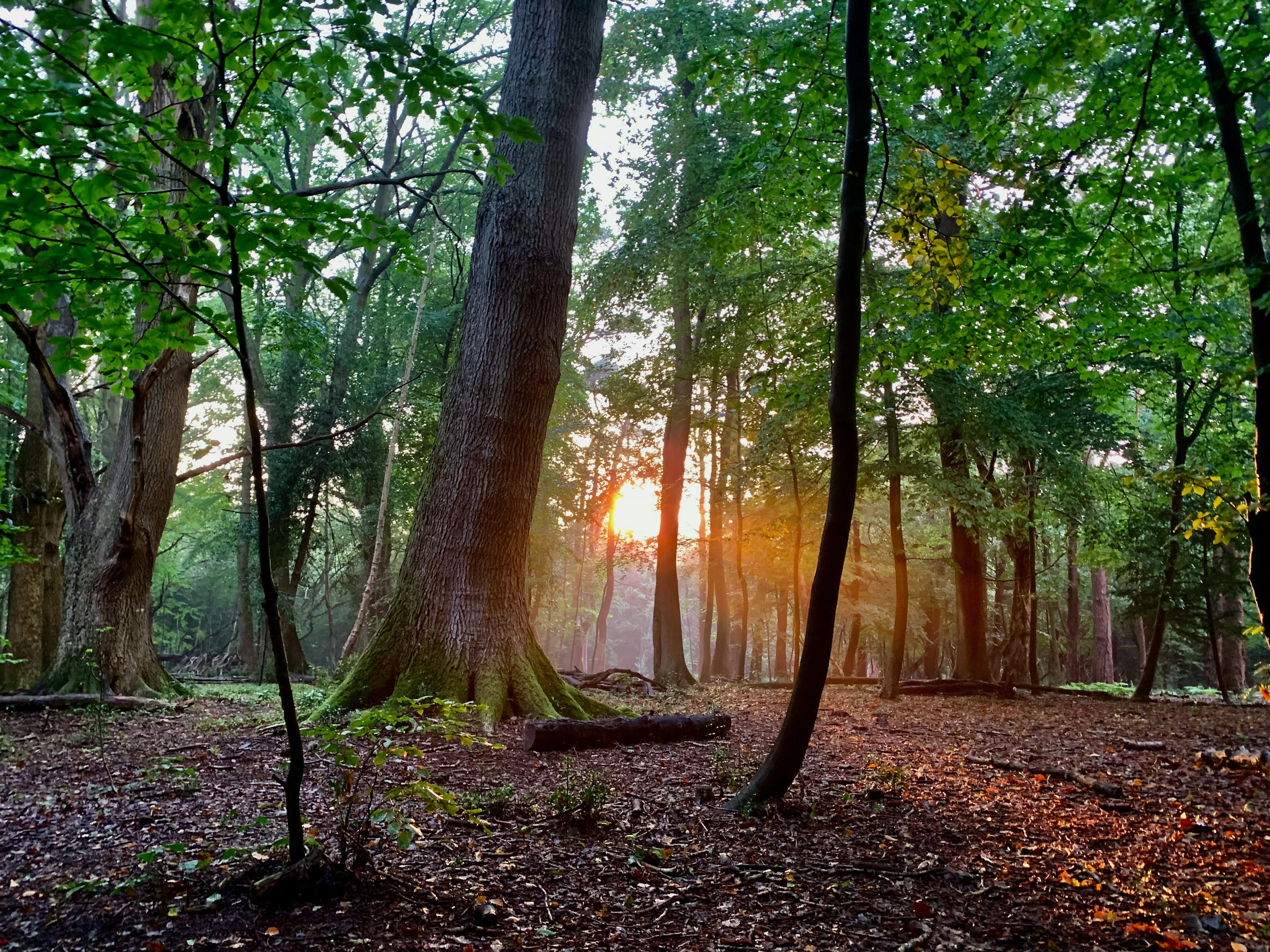
Choose the forest wisely: Look for a quiet, accessible place where you feel safe. It doesn't have to be a famous forest; a forest park near home works too.
Avoid weekends: Popular forests can get crowded. If you can, go on weekdays.
Disconnect your phone: Put your phone in airplane mode or leave it in the car. This time is for you and the forest, without distractions.
Wear comfortable clothes: Layers you can remove or add depending on temperature. Comfortable footwear with good grip, though hiking boots aren't necessary.
During the Forest Bath
Step 1: Entry Ritual (5 minutes)
When you arrive at the forest, make a conscious pause. Stop at the trail entrance, close your eyes, and breathe deeply three times. Declare your intention quietly or mentally: "I come to connect with nature," "I come to calm my mind," "I come to be present."
This ritual marks the transition between everyday life and forest time. It's a way to tell your mind: "We're here now."
Step 2: Aimless Walking (45-60 minutes)
Walk very slowly, at a pace of 650-980 feet per hour. Yes, you read that right: in an hour you barely advance 980 feet. Stop every 10-15 steps. Observe what's around you without judging or naming.
You don't have to get anywhere. If a tree catches your attention, approach it. If you prefer to sit on a rock and stay there 20 minutes, do it. The goal isn't the destination, but the process.
Step 3: Sense Activation (30 minutes)
Dedicate conscious time to each sense:
Sight: Observe bark textures, leaf colors, how light filters through branches. Close your eyes and open them slowly, as if seeing the forest for the first time.
Hearing: Listen without identifying. Don't say "that's a bird"; just listen to the sound. Wind through leaves, water, silence.
Smell: Smell damp earth, pine resins, flowers if present. Approach a tree and smell its bark.
Touch: Touch tree bark, moss, fallen leaves. If the weather's good, go barefoot and feel the earth under your feet.
Taste: If you know plants well, you can try an edible leaf (wild mint, for example). If not, bring an infusion in a thermos and drink it slowly, savoring each sip.
Step 4: Grounding Practice (15 minutes)
Find a tree that inspires confidence. Sit with your back against its trunk. If temperature allows, go barefoot and place the soles of your feet in contact with the earth.
Close your eyes and breathe. Feel the tree at your back, imagine its roots sinking into the earth. You can do a guided meditation (if you have headphones) or simply stay silent, feeling the connection with the forest.
Step 5: Closing Ritual (5 minutes)
Before leaving the forest, give thanks. It doesn't matter if you're not a spiritual person; gratitude is a mindfulness practice that closes the experience.
You can collect a small natural element (a leaf, a pinecone, a stone) as a physical reminder of your forest bath. Take it with you and place it somewhere visible at home.
After the Forest Bath
Don't rush back to normal pace. Leave the forest slowly. If you can, spend 10 minutes writing in a notebook or drawing what you felt.
Maintain silence for the first 30 minutes after leaving. Don't turn on your phone immediately. Let the experience settle in your body and mind.
Guided Forest Bathing vs On Your Own
Advantages of Going with a Guide
A certified shinrin-yoku guide teaches you specific techniques you might not discover alone. You'll learn guided breathing, meditation, and sensory activation practices.
Guides also know restricted-access places or forest corners that don't appear on tourist maps. They also provide botanical, ecological, and historical information that enriches the experience.
If you go in a group, a temporary community of people sharing the intention to connect with nature forms. That can be very powerful.
Advantages of Going Alone
When you practice forest bathing on your own, you have total freedom of pace. There are no schedules or a group to follow. You can stay 10 minutes in front of a tree if you wish.
The connection is usually more intimate when you're alone. There are no conversations to distract you, no one to wait for. Just you and the forest.
Plus, it's much more economical. Once you learn the basic techniques, you can practice every week at no cost. And repetition is key: benefits accumulate with frequent practice.
Forest Bathing Retreats in Spain
If you're looking for complete immersion, several centers in Spain offer 2-3 day retreats dedicated to shinrin-yoku. These retreats typically include:
What's included:
- Guided forest baths by certified practitioners (2-3 sessions of 3 hours)
- Meditation and yoga in nature
- Mindfulness and earth connection workshops
- Mindful eating (vegetarian/vegan meals with local products)
- Accommodation in rural houses or eco-lodges
- Sharing circles (spaces for group reflection)
Approximate prices:
- Weekend retreat (2 days, 1 night): €180-250 per person
- Long retreat (3 days, 2 nights): €350-500 per person
Prices usually include accommodation, all meals, guided sessions, and necessary materials. Some retreats offer shared or individual rooms, with price differences.
Where to find them:
- Sierra de Madrid (Rascafría, Navacerrada)
- Pyrenees (Benasque Valley, La Cerdanya)
- Andalusia (Alpujarras, Sierra de Cazorla)
- Galicia (Ribeira Sacra, Fragas do Eume)
- Asturias (Redes Natural Park, Muniellos)
👉 Explore nature and wellness retreats on Picuco
Frequently Asked Questions
How long does a forest bath last?
A typical forest bath lasts 2-3 hours. During that time you cover barely 1-2 miles, since you walk very slowly and stop frequently. It's not about physical exercise, but being present in the forest. If it's your first time, you can start with 1 hour and increase as you feel comfortable.
Can you do it with children?
Yes, forest bathing is excellent for children. In fact, children usually connect with the practice naturally: they touch everything, observe insects, lie on the ground fearlessly. Adapt the duration (30-60 minutes for young children) and turn sense activation into a game: "How many different textures can you find?", "What sounds do you hear?".
Do I need special equipment?
No. You only need comfortable layered clothing, footwear with good grip (hiking boots aren't necessary), and water. Optionally, you can bring a blanket or mat to sit on the ground, a notebook to write in, and an infusion in a thermos. Nothing more.
Is it the same as hiking?
No. Hiking aims to reach a destination (a summit, a lake, a village). Forest bathing has no destination: the goal is to be present in the forest. In hiking you walk fast to cover miles; in shinrin-yoku you walk slowly to feel. They're complementary but different practices.
Does it work in any forest?
Yes, though some forests are more conducive than others. Deciduous forests (beech, oak) usually create more enveloping atmospheres, and the presence of water (rivers, streams) promotes relaxation. But any wooded natural space works, even urban parks with forest areas. What's important is that you feel calm and safe.
When will I see benefits?
Immediate effects (stress reduction, feeling of calm) are noticeable after the first 2-hour session. Scientific studies show that cortisol levels decrease after 15 minutes in the forest. Medium-term benefits (improved immune system, creativity, mood) consolidate with regular practice: ideally once a week for at least 2 hours.
Conclusion: Your Next Forest Bath
Forest bathing is one of the most accessible and scientifically backed wellness practices. You don't need expensive equipment, gyms, or apps: just a forest, time, and the intention to be present.
Spain has extraordinary forests for practicing shinrin-yoku, from Atlantic beech forests to Mediterranean cork oak groves. Each offers a unique sensory experience. And if you prefer to start with a guide or immerse yourself in a complete retreat, options are increasingly abundant.
The forest awaits you. You just have to take the first step, slowly, very slowly.
👉 Find forests, certified guides, and nature retreats on Picuco
